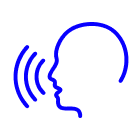Non-Contact Biometric Identification: The Future of Secure Authentication
Biometric identification was meant to replace traditional methods like passwords or keys. Yet, traditional, touch-based biometric systems have drawbacks. Fingerprint scanners quickly become a breeding ground for bacteria — especially during the pandemic, and smudges give hackers a chance to steal your identity.
Contactless biometrics verify who you are without physical contact. Instead of using passwords or keys, it uses features like facial structure, eye patterns, or vein mapping. Cameras, sensors, and software make the verification process fast, easy, and hygienic. If you’ve ever used the facial recognition system on your smartphone, you know how convenient it is.
This technology is gaining traction fast. In 2024, it was worth $17.5 billion and is expected to grow about 17% every year through 2030. This rapid growth comes as more industries — like healthcare, government, defense, and consumer electronics — want easier, scalable, highly secure authentication.
In this article, we’ll share advanced biometric identification technologies, applications and challenges of non-contact biometrics, and a case study in biometric security.

WHAT IS CONTACTLESS BIOMETRICS?
Contactless biometrics verifies an identity without physical contact. Unlike traditional methods like fingerprint scanners, it uses advanced imaging techniques, AI, and pattern recognition to authenticate a person from a distance.
This technology identifies features such as facial patterns, eye scans, and even vein patterns. Relying on cameras, sensors, and software streamlines the verification process while offering a higher level of convenience and hygiene.
THE TECH BEHIND NON-CONTACT BIOMETRIC IDENTIFICATION
Non-contact biometric identification uses advanced technology to capture and analyze unique physical or behavioral traits. Here are some of the most common methods:
Facial recognition technology
Facial recognition technology is what makes Face ID work on modern smartphones. During the pandemic, face masks made it tough for facial recognition algorithms to do their job properly. Infrared (IR) imaging helped with this problem. IR cameras capture detailed facial features even if you wear a mask. They use different wavelengths to detect thermal signatures and patterns on the skin’s surface.
IR technology works across infrared bands: near-infrared (NIR), short-wave infrared (SWIR), mid-wave infrared (MWIR), and long-wave infrared (LWIR). The first two are reflection-dominant and are commonly used to capture facial and iris images, even with low light or low visibility.
MWIR and LWIR are emission-dominant and produce thermograms of objects. These are valuable for AI and machine learning applications. Several specialized datasets have been created to train these systems, such as:
- Carnegie Mellon University Hyperspectral Face Dataset (CMU-HSFD)
- Hong Kong Polytechnic University Hyperspectral Face Database (HK PolyU – HSFD)
- UWA Hyperspectral Face Database (UWA-HSFD)
- CASIA HFB Database
- CASIA NIR-VIS 2.0 Database
Deep neural networks (DNNs) have been adjusted for infrared solutions. For example, GoogleNet, a popular AI model, was modified to work with the CASIA NIR dataset (which contains infrared face images) to create NIRFaceNet, a model designed specifically for recognizing faces in near-infrared (NIR) images.
Application: Ideal for facial recognition access control, surveillance, and healthcare. It works with masks or poor lighting in public spaces, hospitals, and on mobile devices.
Iris identification
Iris identification is a reliable biometric solution that also works when you’re masked up. Most commercial iris identification systems operate in the near-infrared range to capture the iris’s reflection patterns and color variations.
Several publicly available iris databases train and test identification systems:
- IIT Delhi Iris Database
- CASIA-Iris-Thousand Database
- IIITD Multispectral Periocular Database
- ND-IRIS-0405 Database (Captured with an LG2200 iris image camera)
- CrossSensor-Iris-2013 Database (Captured with both LG4000 and LG2200 cameras)
- Visible Light Mobile Ocular Biometric Dataset (Captured with various mobile cameras, such as iPhone 5S and Samsung Note 4)
- Cross Sensor Iris and Periocular Database (Captured with multiple smartphones under varying lighting conditions)
These datasets help iris recognition systems perform well in different environments.
Recent advances in deep learning (DL) have improved the accuracy and efficiency of iris recognition. Some standout methods include:
- VGG-Net: Achieved about 99.4% accuracy on the IIT Delhi Iris Database
- LightCNN29 Networks: A specialized network for iris identification
Other traditional image processing methods have also been used with success:
- Haar Wavelet: 96.6% accuracy
- Log-Gabor Filter: 97.2% accuracy
- Fusion Techniques: 97.4% accuracy
- Elastic Graph Matching: 98% accuracy
- Texture + Scattering Features: 99.2% accuracy on the IIT Delhi Iris Database
These deep learning and image processing methods make iris recognition accurate, even when conditions aren’t ideal.
Application: Used in high-security areas like airports and border control. It’s also found in mobile devices, offering a secure alternative to passwords or face recognition. In healthcare, it protects patient data and ensures only authorized touchless biometric access control to sensitive information.
Ear identification
Ear identification verifies your identity when you wear a mask or respirator. However, it’s challenging because ears are often captured at different angles, in all kinds of lighting, and might be partly covered by accessories.
Early ear identification methods used limited image databases, with images captured from a single camera angle and under one lighting condition. They often used simple geometric or image-based techniques to recognize ear features. Some also adapted well-known image classification models, like VGG or ResNet, for ear recognition.
Today, more advanced methods use deep learning networks, which follow a three-step process:

Capture the whole ear image

Capture different ear regions for detailed analysis

Combine the data from the previous steps for more accurate recognition
These networks are trained and tested using specialized datasets such as the Extended Annotated Web Ears (AWEx) and the Unconstrained Ear Recognition Challenge (UERC). Some datasets even include images of ears with accessories, helping the system handle real-world variations.
Applications: Commonly used in access control systems, like airports and secure facilities, where quick identification is needed. It’s also used in mobile devices for touchless user authentication.
Gait identification
Everyone has a unique walking style, which is why gait recognition systems have been developed. Some systems use footage from surveillance cameras to study body shapes or movement patterns. Others take a simpler, more budget-friendly approach by using existing Wi-Fi networks with CSI capabilities and sensors with deep learning (DL) techniques. However, if more advanced systems are used, you’ll need to install pressure, light, capacitance, and electromagnetic noise sensors throughout a space. While they take longer to set up, they offer extra benefits, such as the ability to identify emotions alongside gait.
Applications: Used in security to track people in crowded spaces. In healthcare, it helps with fall detection and monitoring mobility. It also analyzes walking patterns to detect emotional changes like stress or anxiety.
Fingerprint identification
Fingerprints have long been a trusted method of biometric identification, widely used to unlock smartphones and laptops and secure sensitive areas. These sensors, often based on optical, capacitive, or ultrasonic technologies, capture the fine ridges and valleys of a fingerprint from a distance.
These solutions range from basic proposals, like using web cameras and OpenCV libraries for processing, to advanced sensors built into smartphone cameras. Some have even been FBI-certified, putting worries about hackers stealing fingerprints from high-definition images online to rest.
Applications: Widely used in mobile banking. It's also applied in busy airports or offices for seamless identity verification. It also identifies criminals in law enforcement.
Additional non-contact methods
Additional solutions that have found their way to market include:

Finger vein recognition uses near-infrared light to capture the unique patterns of veins beneath the skin. It’s used for secure authentification in banking and financial services.

Retina scanning checks the blood vessel patterns in the retina for highly secure identity verification. It’s often used in healthcare and high-security areas.

Palm and dorsal palm recognition identifies people by vein structures in the palms. It’s commonly used in secure facilities or access control systems.

Footprint identification looks at the pressure and shape of the foot. It’s often used at swimming pools, beaches, or hospital beds.

Voice biometrics uses unique vocal characteristics to verify identity. It’s used in customer service, phone banking, and remote authentication.

Case study: SoftServe’s Finger Vein Recognition System
SoftServe's R&D team developed a finger vein recognition system to enhance biometric security. Unlike fingerprints, which can be spoofed, finger vein patterns are unique and hidden beneath the skin, making them more secure.
One big challenge was capturing high-quality vein images, especially for smaller fingers, which are often overexposed in infrared imaging. To fix this, the team optimized the LED source block and IR camera positioning, which made the veins easier to see.
They also built a custom hardware device. The system used AI-driven image processing to authenticate users with 95% accuracy in preliminary tests. When combined with fingerprint recognition, the accuracy could go beyond 99%.
This solution highlights the potential of AI-driven, non-contact biometric solutions for secure authentication in banking, healthcare, and public security.
FINAL THOUGHTS
SoftServe’s R&D team keeps one finger on the pulse of innovation to explore new applications of technology. We build and integrate biometric solutions that fit your business needs. With expertise in AI, ML, and cybersecurity we create secure, scalable, and user-friendly systems. Whether you need facial recognition, iris scanning, or multi-factor authentication, we guide you through the process and find the right fit.
Let’s talk about how to fast-track your contactless security at your company.
Start a conversation with us

